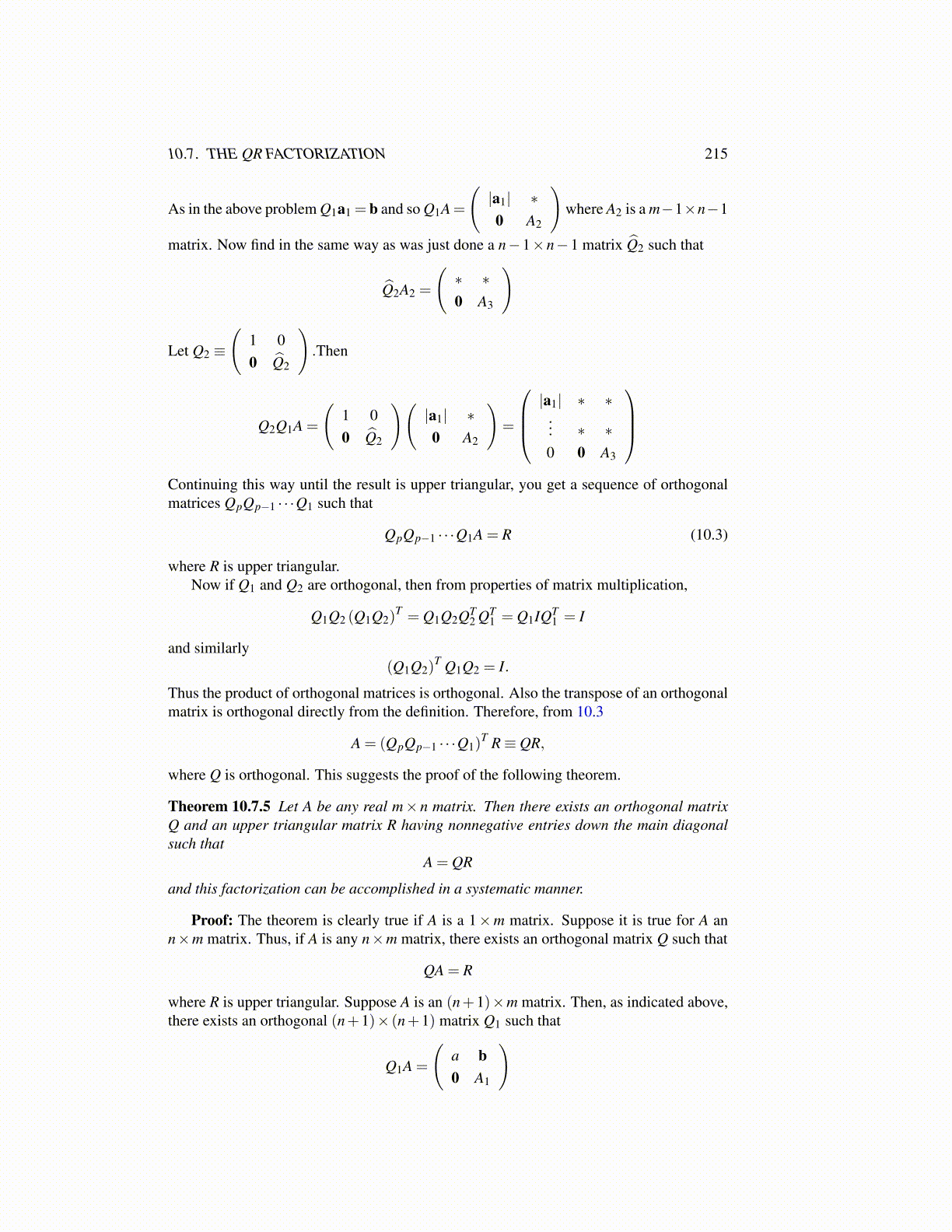
10.7. THE QR FACTORIZATION 215
As in the above problem Q1a1 = b and so Q1A=
(|a1| ∗0 A2
)where A2 is a m−1×n−1
matrix. Now find in the same way as was just done a n−1×n−1 matrix Q̂2 such that
Q̂2A2 =
(∗ ∗0 A3
)
Let Q2 ≡
(1 00 Q̂2
).Then
Q2Q1A =
(1 00 Q̂2
)(|a1| ∗0 A2
)=
|a1| ∗ ∗
... ∗ ∗0 0 A3
Continuing this way until the result is upper triangular, you get a sequence of orthogonalmatrices QpQp−1 · · ·Q1 such that
QpQp−1 · · ·Q1A = R (10.3)
where R is upper triangular.Now if Q1 and Q2 are orthogonal, then from properties of matrix multiplication,
Q1Q2 (Q1Q2)T = Q1Q2QT
2 QT1 = Q1IQT
1 = I
and similarly(Q1Q2)
T Q1Q2 = I.
Thus the product of orthogonal matrices is orthogonal. Also the transpose of an orthogonalmatrix is orthogonal directly from the definition. Therefore, from 10.3
A = (QpQp−1 · · ·Q1)T R≡ QR,
where Q is orthogonal. This suggests the proof of the following theorem.
Theorem 10.7.5 Let A be any real m× n matrix. Then there exists an orthogonal matrixQ and an upper triangular matrix R having nonnegative entries down the main diagonalsuch that
A = QR
and this factorization can be accomplished in a systematic manner.
Proof: The theorem is clearly true if A is a 1×m matrix. Suppose it is true for A ann×m matrix. Thus, if A is any n×m matrix, there exists an orthogonal matrix Q such that
QA = R
where R is upper triangular. Suppose A is an (n+1)×m matrix. Then, as indicated above,there exists an orthogonal (n+1)× (n+1) matrix Q1 such that
Q1A =
(a b0 A1
)